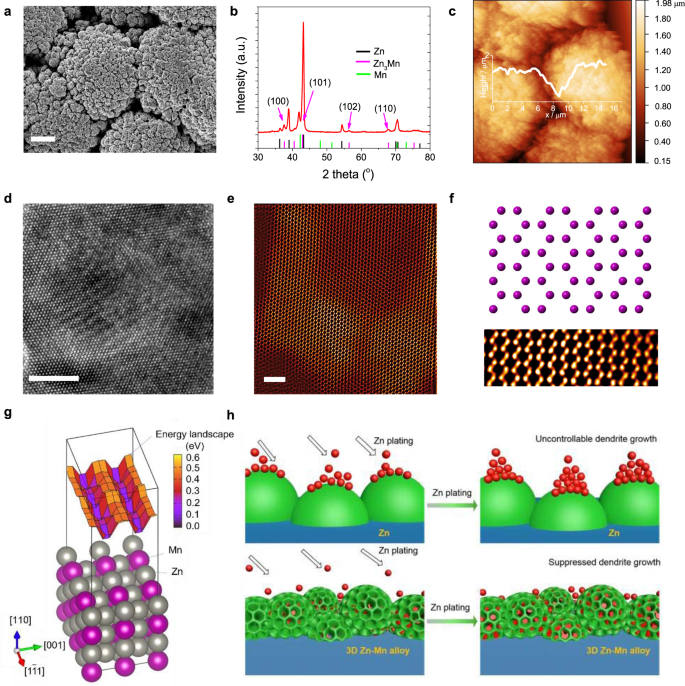2021/1/4 ドイツ連邦共和国・ミュンヘン工科大学(TUM)

・ TUM が、現行の蓄電池に匹敵する性能を提供する、グラフェンと金属有機構造体(MOF)から構成されるハイブリッド材料をベースとした高効率の非対称性スーパーキャパシタ(ASC))を開発。
・ 蓄電池に比べて大量のエネルギーを急速に充放電できるスーパーキャパシタは、ラップトップ、カメラや自動車の代替電源として使用されるケースが増えているが、エネルギー密度の低さ(リチウムイオン電池の 1/10)が主要な課題となっている。
・ 新ハイブリッド材料による正極とチタンとカーボンによる負極を組み合わせた新 ASC では、ニッケル水素電池に匹敵する最大 73Wh/kg のエネルギー密度に加え、スーパーキャパシタの中でも卓越した16kW/kg の出力密度を達成。
・ 自然界の進化の課程で形成される、様々な材料が組み合って硬度や弾性等の機械的特性が最適化された極めて複合的な材料に着想し、標準的な材料における性能の限界を克服する方策としてハイブリッド材料を活用した。
・ 微細孔を持つ MOF とグラフェンによる同ハイブリッド材料が提供する、最大 900 ㎡/g の大比表面積、孔サイズの自在な調整と高電導性が同 ASC の特徴。また、タンパク質のアミノ酸のような、グラフェンと MOF 間の強力な化学結合により、長期的な化学安定性を獲得した。
・ 充放電サイクルの向上には、結合の安定性が不可欠となる。標準的なリチウムイオン電池のサイクル寿命は約 5,000 サイクルのところ、新 ASC では 10,000 サイクル後も 90%の容量を保持する。
URL: https://www.tum.de/nc/en/about-tum/news/press-releases/details/36404/
<NEDO海外技術情報より>
(関連情報)
Advanced Materials 掲載論文(フルテキスト)
Covalent Graphene‐MOF Hybrids for High‐Performance Asymmetric Supercapacitors
URL: https://onlinelibrary.wiley.com/doi/10.1002/adma.202004560
Abstract
In this work, the covalent attachment of an amine functionalized metal‐organic framework (UiO‐66‐NH2 = Zr6O4(OH)4(bdc‐NH2)6; bdc‐NH2 = 2‐amino‐1,4‐benzenedicarboxylate) (UiO‐Universitetet i Oslo) to the basal‐plane of carboxylate functionalized graphene (graphene acid = GA) via amide bonds is reported. The resultant GA@UiO‐66‐NH2 hybrid displayed a large specific surface area, hierarchical pores and an interconnected conductive network. The electrochemical characterizations demonstrated that the hybrid GA@UiO‐66‐NH2 acts as an effective charge storing material with a capacitance of up to 651 F g−1, significantly higher than traditional graphene‐based materials. The results suggest that the amide linkage plays a key role in the formation of a π‐conjugated structure, which facilitates charge transfer and consequently offers good capacitance and cycling stability. Furthermore, to realize the practical feasibility, an asymmetric supercapacitor using a GA@UiO‐66‐NH2 positive electrode with Ti3C2TX MXene as the opposing electrode has been constructed. The cell is able to deliver a power density of up to 16 kW kg−1 and an energy density of up to 73 Wh kg−1, which are comparable to several commercial devices such as Pb‐acid and Ni/MH batteries. Under an intermediate level of loading, the device retained 88% of its initial capacitance after 10 000 cycles.



